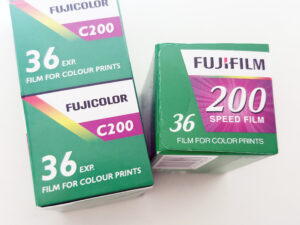In the digital age, tools like Adobe Creative Cloud have made graphic design software accessible to everyone. “I’ve got Photoshop! I’m now a graphic designer!” is a sentiment echoed by many. However, having access to Adobe Creative Cloud does not equate to possessing the skills and knowledge required to be a proficient graphic designer. The reality is that true graphic design extends far beyond the mere use of design software; it is a discipline that demands a deep understanding of visual communication, principles of design, and the ability to create work that is both functional and aesthetically pleasing.
The Misconception of Graphic Design Simplicity
A prevalent misconception is that graphic design is easy, an endeavor that anyone can undertake with a bit of practice on Adobe Creative Cloud tools like Photoshop or Illustrator. This erroneous belief undermines the complexity and nuance inherent in the design process. Non-designers often approach graphic design with a superficial understanding, ignoring critical elements like functionality and adherence to design principles. This oversight frequently results in creations that are visually cluttered, lack coherence, and fail to effectively communicate the intended message.

The Dangers of Overconfidence in Graphic Design
Amateur designers tend to overestimate their abilities, rating their work highly despite making fundamental mistakes. Common errors include neglecting negative space, overusing effects, and creating designs that appeal to personal tastes rather than resonating with the target audience. Negative space, or white space, is crucial for readability and focus in a design. Excessive use of effects can lead to visual overload, detracting from the message. Moreover, personal preference does not always align with the audience’s expectations or needs, leading to designs that fail to engage or communicate effectively.
The Role of a Professional Graphic Designer
Professional graphic designers are more than just users of Adobe Creative Cloud; they are visual problem solvers trained in the principles of design, color theory, and typography. They understand how to create designs that communicate messages clearly and effectively, ensuring that visual elements work harmoniously to support the overall purpose of the piece. Designers consider factors such as audience perception, interaction, and emotional response, all of which are critical for creating impactful and functional designs.

The Graphic Design Process
When a professional graphic designer takes on a project, the process involves more than just creating something visually appealing. It starts with understanding the client’s goals, preferences, and business objectives. This is followed by brainstorming and conceptualization, where designers sketch ideas and explore various approaches. The design phase is iterative, involving feedback and revisions to ensure the final product aligns with the client’s vision and effectively communicates the intended message.
The designs created by amateurs often bypass these essential steps, resulting in generic and static outcomes that do not convey the nuances of a brand’s identity or message. As businesses grow, these hastily created designs often require professional intervention to correct flaws and ensure consistency, leading to additional costs and time.
The Importance of Investment in Professional Graphic Design
Investing in professional graphic design from the outset is crucial for businesses seeking to establish a strong and consistent brand identity. While the initial cost may be higher, the long-term benefits far outweigh the expense. Professional designs enhance brand perception, ensure coherence across various media, and effectively communicate with the target audience. This investment can significantly impact a business’s success and growth, making it a worthwhile consideration.
Navigating the Graphic Design Professional Landscape

For those working within organizations where non-designers frequently undertake design tasks, several strategies can help manage this challenge:
Articulate the Value of Professional Graphic Design
Clearly explain the importance of professional design in terms that resonate with non-designers. Emphasize the impact on brand perception, audience engagement, and overall business success.
Create a Style Guide
Develop comprehensive branding guidelines that outline the visual and stylistic standards for all materials. This ensures consistency and provides a reference for anyone creating design work.
Acknowledge Time Constraints
Recognize that sometimes speed is prioritized over perfect design. Develop templates for common design needs to help non-designers create better quality work quickly.
Offer Constructive Feedback
When you encounter poorly designed materials, provide feedback to help improve future work. Constructive criticism can help non-designers understand their mistakes and learn from them.
In conclusion, while Adobe Creative Cloud has democratized access to graphic design tools, it has also led to a proliferation of poorly executed designs by individuals who lack the necessary expertise. Professional graphic designers bring a wealth of knowledge and experience that goes beyond the mere use of software, ensuring that designs are not only visually appealing but also functional and effective. Businesses and individuals must recognize the value of professional graphic design and invest accordingly to achieve the best results. Only then can the true potential of graphic design be realized, contributing to the success and growth of businesses and organizations.







































































